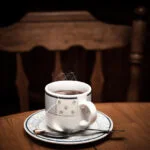Table of Contents
Introduction to Darjeeling Tea
Darjeeling tea, often called the “Champagne of Teas,” is celebrated worldwide for its unique, aromatic flavor profile. Grown in the foothills of the Himalayas in Darjeeling, India, this tea stands out due to the region’s cool climate, high altitude, and unique soil. But what does Darjeeling tea taste like, and why does it have such a special place in the hearts of tea lovers globally?
What Does Darjeeling Tea Taste Like?
The taste of Darjeeling tea can vary significantly based on the time of harvest, but most varieties share certain distinct characteristics. Darjeeling tea has a light, floral taste that often carries notes of muscatel, a type of grape. The tea has a bright, golden color when brewed, and the taste can range from fruity and floral to more earthy, depending on the season and the specific estate it’s sourced from.
What Is the Flavour of Darjeeling Tea?
The flavor of Darjeeling tea is influenced by its terroir and is often described as complex, multi-layered, and delicate. Its most distinctive notes are:
- Floral and Fruity Undertones: Darjeeling tea often carries a floral aroma with hints of fruit, resembling the delicate taste of muscatel grapes. This gives it a sweet, wine-like flavor that distinguishes it from other teas.
- Nutty and Spicy Accents: Some varieties, particularly those harvested later in the year, can have mild nutty or spicy undertones, adding depth and richness to the tea.
- A Touch of Astringency: Darjeeling tea has a pleasant astringency, a characteristic that provides a slight dryness, creating a well-rounded sip and leaving a clean finish.

Each sip of Darjeeling tea unfolds with new flavors, which makes it a delight for tea enthusiasts. The unique combination of floral, fruity, nutty, and astringent notes contributes to its complexity and makes each cup a unique experience.
👉 Indulge in the Most Exquisite Darjeeling Tea Selection! 👈
Does Darjeeling Tea Taste Good?
Darjeeling tea is generally praised by tea connoisseurs and casual drinkers alike for its sophisticated and delicate flavor. Unlike stronger black teas, it is less robust, which allows its intricate flavors to shine without overwhelming the palate. Those who enjoy light, aromatic teas typically find Darjeeling tea refreshing and enjoyable, especially when brewed correctly. While taste preferences are subjective, the subtle yet rich flavors of Darjeeling tea are often favored by those who appreciate complex, floral, and slightly fruity teas.
What Is So Special About Darjeeling Tea?
Darjeeling tea’s unique flavor comes from several factors:
- High Altitude and Cool Climate: The Darjeeling region, located at an elevation of about 4,000 to 6,000 feet, provides the perfect conditions for tea cultivation. The cool air, moderate rainfall, and nutrient-rich soil result in tea leaves with a distinctive character.
- Seasonal Variations: Darjeeling tea is harvested in three main flushes – First Flush (spring), Second Flush (summer), and Autumn Flush. Each flush produces leaves with unique flavors:
- First Flush: These springtime leaves are light, floral, and delicate with a slight astringency.
- Second Flush: Known for the muscatel flavor, these summer leaves have a fuller body, a fruity aroma, and a hint of sweetness.
- Autumn Flush: The final harvest of the year, with a mellow, earthy taste that is smooth and well-rounded.
- Hand-Plucking and Traditional Processing: The delicate handling and meticulous processing methods used to produce Darjeeling tea ensure its flavor and quality are preserved.
Do You Drink Darjeeling Tea with Milk?

Darjeeling tea is usually best enjoyed without milk. Since it has a light, floral flavor profile, adding milk can overshadow its natural notes and mask its complexity. However, if you prefer a richer, creamier taste, you can add a splash of milk to stronger brews, such as those made with Second or Autumn Flush leaves. When drinking Darjeeling tea with milk, it’s important to brew it slightly stronger than usual to balance out the flavors.
👉 Refresh & Rejuvenate with Superior Darjeeling Tea! 👈
How to Brew the Perfect Cup of Darjeeling Tea
To fully experience what Darjeeling tea tastes like, follow these simple steps for brewing:
- Boil Fresh Water: Use filtered water to bring out the best flavors.
- Measure the Leaves: Add one teaspoon of loose-leaf Darjeeling tea per cup.
- Steep Carefully: Pour hot (not boiling) water over the leaves and steep for about 3-5 minutes. Over-steeping can lead to bitterness.
- Enjoy Plain or with Lemon: Darjeeling tea pairs well with a slice of lemon or a dash of honey for those who prefer a bit of sweetness.
Final Thoughts: Why Darjeeling Tea is a Must-Try
If you’re a tea lover who appreciates a refined and unique taste, Darjeeling tea is worth exploring. Its delicate flavors, seasonal variations, and complex aroma make it one of the most distinguished teas in the world. From the muscatel notes of the Second Flush to the floral aromas of the First Flush, each cup of Darjeeling tea offers a journey through the Himalayan landscape where it was born. So, the next time you wonder, “What does Darjeeling tea taste like?” remember that each sip tells a story as intricate as the tea itself.













